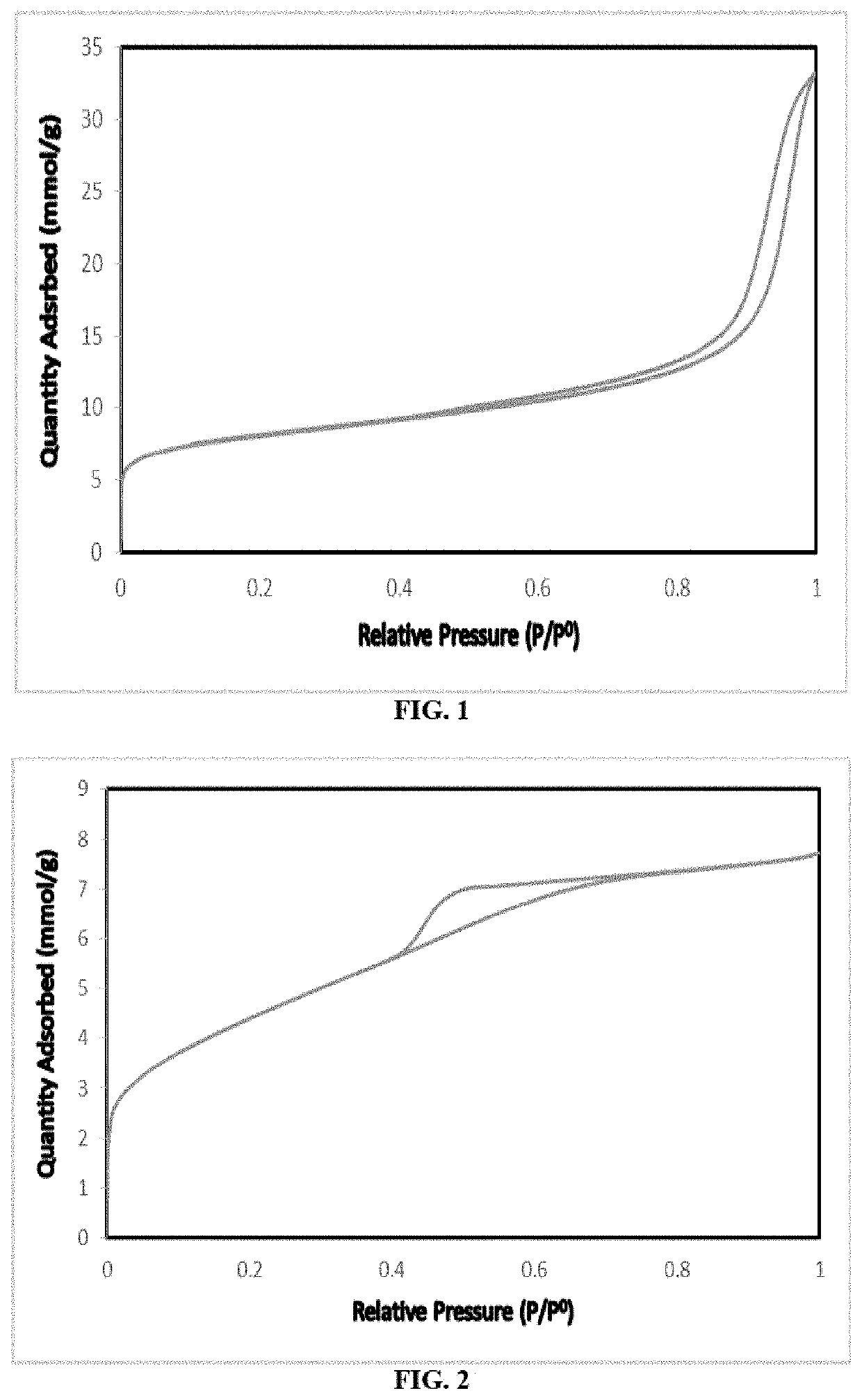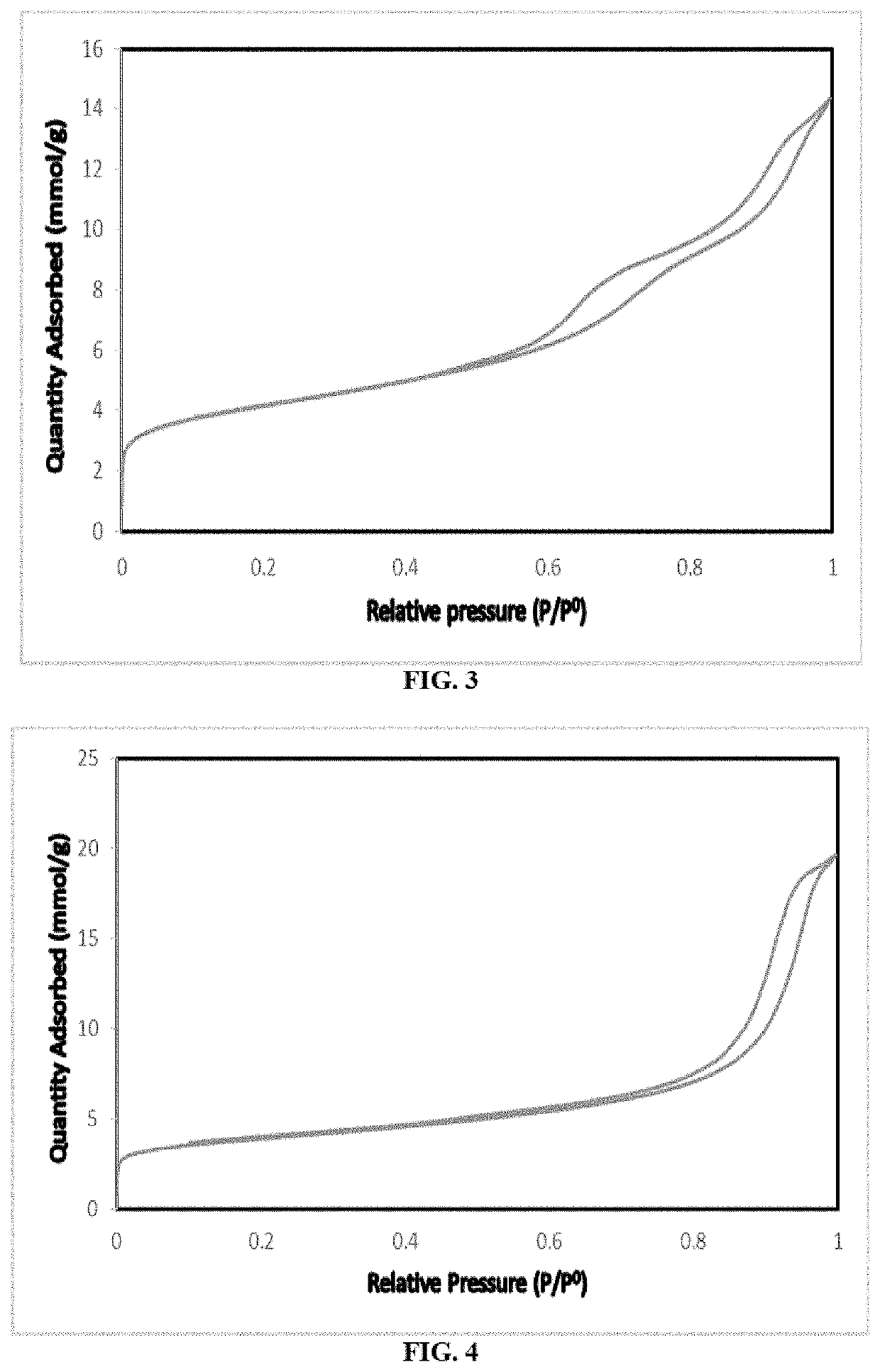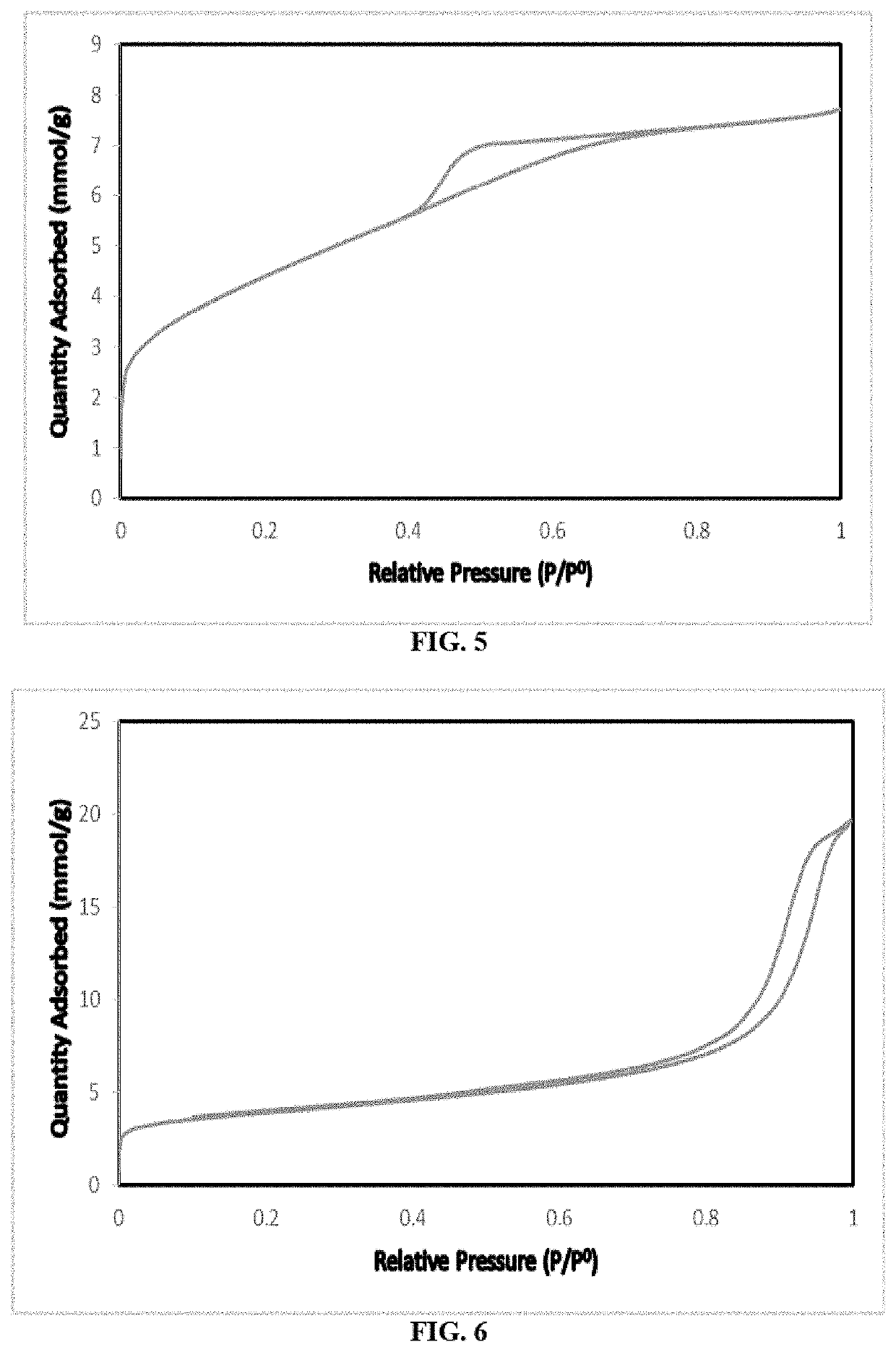Method for desulfurizing a hydrocarbon feedstock
a hydrocarbon feedstock and desulfurization technology, applied in the direction of hydrocarbon oil treatment, catalyst activation/preparation, metal/metal-oxide/metal-hydroxide catalyst, etc., can solve the problems of affecting the health and property of people, affecting the environment, and increasing the cost of refining
- Summary
- Abstract
- Description
- Claims
- Application Information
AI Technical Summary
Benefits of technology
Problems solved by technology
Method used
Image
Examples
example 1
Materials
[0105]Activated carbon (AC) derived from waste tires, ammonium molybdate [(NH4)6MO7O24.4H2O], nickel acetate [Ni(C2H3O2)2.4H2O], cobalt nitrate [Co(NO3)2.6H2O], decahydronaphthalene (decalin) [C10H18], dibenzothiophene (DBT) [C12H8S], citric acid (CA) [C6H10O7], ethylenediaminetetracetic acid (EDTA) [C10H16N2O8], and deionized water [H2O].
[0106]The ammonium molybdate, nickel acetate, and cobalt nitrate were A.C.S certified analytical grades from Fisher Scientific Company, USA. Decalin (99%) and DBT (98%) were obtained from Sigma Aldrich. All the reagents were used as purchased from the manufacturers without any form of pretreatment or modification.
example 2
Preparation of Support Materials: Preparation of Activated Carbon Support
[0107]Activated carbon support was prepared from waste rubber tires according to the detailed procedure described in a previous report [V. K. Gupta, I. Ali, T. A. Saleh, M. N. Siddiqui, and S. Agarwal, “Chromium removal from water by activated carbon developed from waste rubber tires,”Environ. Sci. Pollut. Res., vol. 20, no. 3, pp. 1261-1268, 2013, incorporated herein by reference in its entirety].
example 3
Preparation of Support Materials: Preparation of TiO2 Support
[0108]TiO2 was prepared through a modified sol-gel and hydrothermal synthesis route reported in the literature. A dilute aqueous solution of TiCl4 was prepared by adding 20 mL of TiCl4 to 40 mL ethanol kept in an ice bath. The calculated amount of deionized water was added to the solution to form a 2 molar stock of TiCl4. Appropriate amounts of the solution were added to a round bottom flask, which was then placed in an oil bath sitting on a hot plate / magnetic stirrer. Drops of diluted aqueous ammonia were added to the solutions until a gel was formed while stirring at a solution was stirred at 350 rpm and the temperature was set at 80° C. The gel was allowed to age for 24 h before filtration and washing with distilled water to remove the excess base. The material was filtered and allowed to dry in an oven.
PUM
| Property | Measurement | Unit |
|---|---|---|
| temperature | aaaaa | aaaaa |
| pressure | aaaaa | aaaaa |
| temperature | aaaaa | aaaaa |
Abstract
Description
Claims
Application Information
 Login to View More
Login to View More - Generate Ideas
- Intellectual Property
- Life Sciences
- Materials
- Tech Scout
- Unparalleled Data Quality
- Higher Quality Content
- 60% Fewer Hallucinations
Browse by: Latest US Patents, China's latest patents, Technical Efficacy Thesaurus, Application Domain, Technology Topic, Popular Technical Reports.
© 2025 PatSnap. All rights reserved.Legal|Privacy policy|Modern Slavery Act Transparency Statement|Sitemap|About US| Contact US: help@patsnap.com



